Are you starting a new website or aiming to drive more traffic to an existing one? You might not realize just how crucial backlinks are in improving your SEO strategy. Backlink SEO plays a pivotal role in boosting your site’s visibility, helping it rank higher in search engine results. When executed correctly, this technique can make a significant impact. In this guide from OctopusWriters, you’ll explore the ins and outs of backlink SEO and learn how to use it to maximize your website’s performance.

What Is Backlink SEO?
Backlinks are hyperlinks that one website receives from another. They serve not only to boost brand visibility and referral traffic but also play a key role in enhancing your SEO efforts. While some websites naturally accumulate backlinks, marketers often focus on actively generating and managing them for better SEO performance.

For example, OctopusWriters got this backlink from an SEO blog:
Imagine an SEO blog publishes an article titled “Best Tools to Supercharge Your SEO Strategy in 2024.” In the article, they introduce my service, OctopusWriters, and include a hyperlink to my website. This hyperlink is a backlink because it’s a link from their site to mine.
Here’s what it might look like in their article:
“For those looking to strengthen their SEO efforts through private blog networks, OctopusWriters offers expert PBN building services designed to enhance your website’s search engine rankings. OctopusWriters specializes in creating high-quality, authoritative networks that help boost your SEO performance, making it a go-to resource for businesses looking to grow their online visibility.”
The text OctopusWriters would be the clickable backlink that directs users to my site. By linking to OctopusWriters, the SEO blog not only drives referral traffic but also signals to search engines that my site is a credible and valuable resource in the realm of PBN services.
Types Of Backlinks And Their SEO Impact
It’s important to note that not all backlinks carry the same value in the eyes of search engines. A backlink acts as a vote of confidence from one site to another, yet this doesn’t always translate into higher quality scores. Search engines are vigilant against spammy tactics that aim to manipulate backlink counts for better rankings.
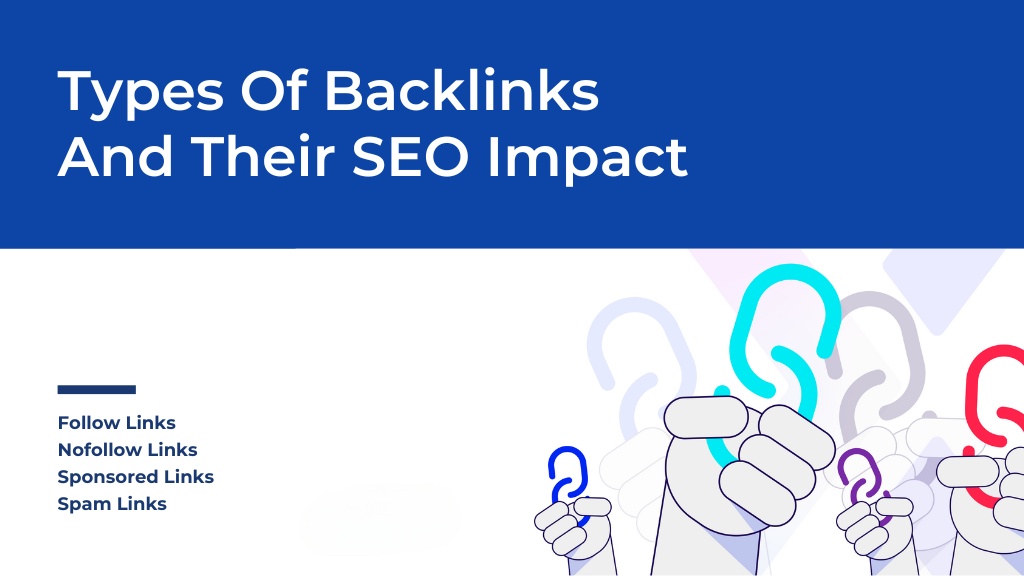
To evaluate a site’s link profile, search engines like Google categorize backlinks into four distinct types:
Follow Links
Follow links are the standard type of hyperlink that search engines track, meaning their value is recognized by search engine crawlers. For instance, if a golf blogger links to their favorite golf store in a post or mentions a partner site on a “Partners” page, those links are classified as follow links. These are essential for SEO because they indicate to search engines that the linked website is credible and trustworthy. Unless specified otherwise, most links are considered follow links by default.
Nofollow Links
A nofollow link contains specific HTML code that instructs search engines not to pass any ranking credit to the linked page. Websites often use nofollow tags in cases where they don’t want to endorse the external site. Common examples include links in forums or social media platforms, where users share content beyond the site owner’s control. Similarly, blogs often add nofollow tags to links in their comment sections to avoid spammers from gaming SEO by adding their own backlinks.
Sponsored Links
Sometimes, websites pay for backlinks as part of sponsored content, ads, or paid partnerships. In these cases, search engines require the use of a “sponsored” tag to indicate that the link is part of a commercial arrangement. This tag signals to search engines that the link should not carry weight in ranking considerations. Failing to tag sponsored links can result in search engine penalties, causing a drop in rankings.
Spam Links
As SEO practices evolve, so too do unethical attempts to manipulate search rankings through backlinks. This includes creating low-quality links that haven’t been earned through genuine endorsement. Search engines penalize such practices, particularly links from spammy blogs or link farms, which are designed solely to generate backlinks rather than provide any real value to users. Common offenders include blog comment spam and links originating from low-quality sites with no authentic audienc
3 Key Benefits Of Backlink SEO You Can’t Ignore
A recent study revealed that over 46% of SEO professionals invest between $5,000 and $10,000 per month on link building. Yet, despite these investments, data from Ahrefs shows that 66.31% of web pages have no backlinks at all, and 90.63% of pages receive zero organic traffic from Google.
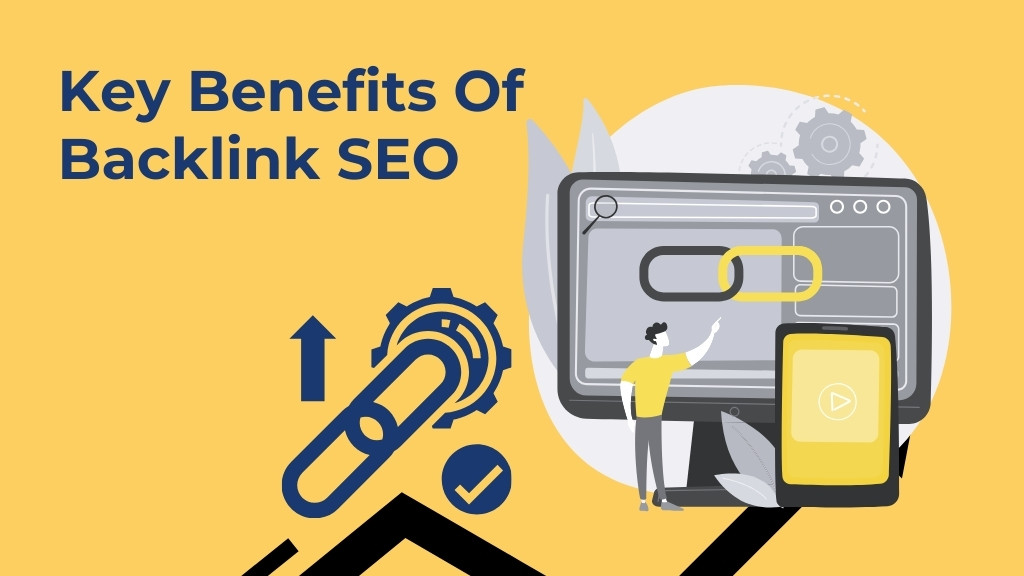
The trend is clear: backlinks matter. Let’s explore why they are so crucial for your website’s success.
Improved Search Engine Rankings
Backlinks are often referred to as Google’s “vote of confidence.” When your website earns high-quality backlinks, Google views it as a reliable and authoritative source, which can lead to higher search engine rankings.
Ahrefs supports this idea with a study showing a strong correlation between the number of referring domains and keyword rankings. However, the focus shouldn’t just be on accumulating a large quantity of backlinks. Instead, it’s about quality.
Low-quality backlinks can harm your site in the long term, as Google may flag them as spammy. It’s far better to concentrate on securing high-quality backlinks from reputable sources. Tools like SE Ranking’s Backlink Checker can help you assess the health of your backlink profile by providing a Toxicity Score for each link. This allows you to identify and address any risky backlinks that could negatively impact your site’s rankings.
What defines a high-quality backlink? In general, it originates from a site with strong domain authority, one that’s trusted by both search engines and users alike.
Boosted Domain Authority
Earning backlinks from credible, relevant websites will gradually enhance your domain authority (DA). Developed by Moz, DA is a score that ranges from 1 to 100, with higher numbers indicating better chances of ranking well in search results.
SEO professionals also rely on Ahrefs’ Domain Rating (DR), which is another metric that evaluates a site’s backlink profile. You can easily check your own domain rating using Ahrefs’ free tool.
A tip for maximizing the impact of backlinks: aim for sites with a DR of 40 or above, and target those with a DR of 70+ for even stronger results.
Increased Referral Traffic And Lead Generation
Backlinks do more than just improve your site’s SEO-they can also drive referral traffic and generate leads. When someone clicks on a link embedded in an article or blog post, they are directed to the linked website, potentially bringing in new visitors and prospective customers.
From my experience, it’s difficult to predict which guest posts or media outlets will convert better. I’ve seen some posts generate hundreds of demo requests, while others only resulted in a few clicks. That’s why it’s important not to rely solely on backlinks for referral traffic, but to view it as a valuable bonus.
In conclusion, while backlinks primarily serve to improve your site’s SEO performance, they also contribute to building domain authority and attracting referral traffic. The key is to focus on acquiring high-quality backlinks from trusted, authoritative sites that align with your niche.
How To Check The Backlinks Pointing To A Page
In the past, checking backlinks was as simple as using a search operator in Google by typing “link:” followed by the URL. This command would display a list of sites linking to the specified page. However, Google discontinued this feature in 2017.
Now, if you want to see your backlinks, there are several modern options available. One free method is by using Google Search Console. By adding your site as a property, you can generate a backlink report.
However, it’s important to note that this report only provides a sample of your backlinks, often containing outdated data rather than up-to-the-minute information. It also won’t include all of the links you’ve earned, nor will it give you insight into your competitors’ backlink strategies.
Given that most site owners and SEOs need more comprehensive data for better visibility on SERPs, several advanced tools have been developed to offer deeper insights into backlink profiles and link-building efforts. Here are a few highly recommended tools:
Best Tools For Analyzing Backlinks
- Ahrefs: One of the most popular SEO tools, Ahrefs offers a robust backlink checker that provides detailed information about the links pointing to your site. It also allows you to analyze competitors’ backlinks, track new and lost links, and evaluate the quality of referring domains.
- SEMrush: This all-in-one SEO platform includes a powerful backlink analysis tool. You can use it to track your backlinks, discover new opportunities for link-building, and perform competitive analysis to see where your competitors are gaining links.
- Moz Link Explorer: Moz’s backlink tool helps you find and analyze the backlinks pointing to any page. It also provides helpful metrics like Domain Authority (DA) and Page Authority (PA) to gauge the quality of linking sites.
- Majestic: Specializing in backlink analysis, Majestic offers detailed insights into link profiles. Their unique Trust Flow and Citation Flow metrics help evaluate the quality and quantity of backlinks, respectively.
These tools offer more detailed, updated data than Google Search Console alone, and they are essential for understanding your site’s backlink profile as well as those of your competitors.
How To Identify Good vs. Bad Backlinks For SEO
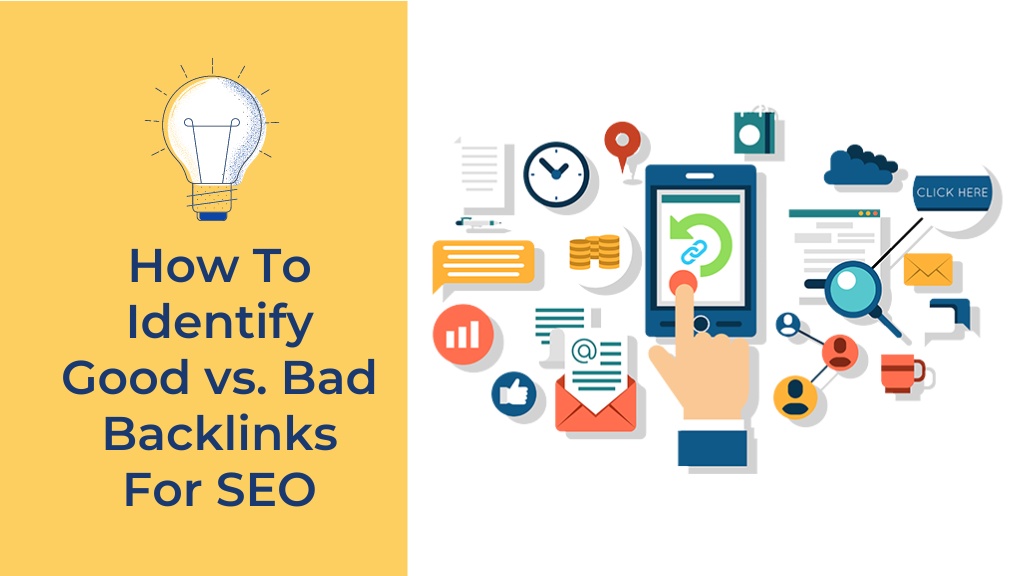
Backlinks can significantly boost your website’s authority and improve the rankings of both individual pages and your domain overall. However, understanding the difference between good and bad backlinks is essential for maintaining a healthy link profile, here’s a quick breakdown:
Good Backlinks:
- Trusted Sources: Good backlinks come from reputable websites that are relevant to your industry or niche. For example, if your business sells pet supplies, a backlink from a popular animal welfare blog would be a strong signal to search engines.
- Earned Naturally: These links are the result of producing excellent content that third-party websites want to share without being asked. Alternatively, even if you do request a backlink, the content is of such high quality that they’re happy to oblige.
- No Incentives Involved: A good backlink is freely given, without any exchange of money, gifts, or perks in return for the link.
- Selective Requests: Good backlinks are gained through targeted, thoughtful outreach rather than mass emailing hundreds or thousands of websites with little regard for relevance.
- Diverse Anchor Text: Instead of using the same keyword repeatedly across multiple links, high-quality backlinks utilize a variety of anchor text. This diversity appears more organic to search engines.
- Transparent Links: Good links take users to the expected destination and are not manipulative in any way. They are visible to both users and search engines, with no attempt to hide them in code.
Bad Backlinks:
- Paid or Exchanged Links: Backlinks resulting from financial transactions or exchanges of services are considered manipulative by search engines.
- Mass Link Schemes: Large-scale link exchange schemes or participation in paid link farms are common red flags for bad backlinks.
- Spammy Websites: Bad backlinks come from sites that engage in questionable SEO tactics or exhibit spammy behavior, such as selling links in bulk or placing hidden links on pages.
- Hidden or Exploited Links: Links injected into a site’s code through security loopholes or attempts to hide links from users while exposing them to crawlers are considered bad practices.
- Keyword Stuffing in Anchor Text: Bad backlinks often overuse specific keywords in the anchor text in an attempt to manipulate rankings. This pattern can be flagged by search engines and lead to penalties.
While growing a robust backlink profile with good links will help build your site’s authority over time, it’s important to avoid bad practices. Google explicitly warns against manipulative link-building tactics in its Webmaster Guidelines and can penalize sites that engage in prohibited behavior.
3 Simple Tips To Earn Quality Backlinks
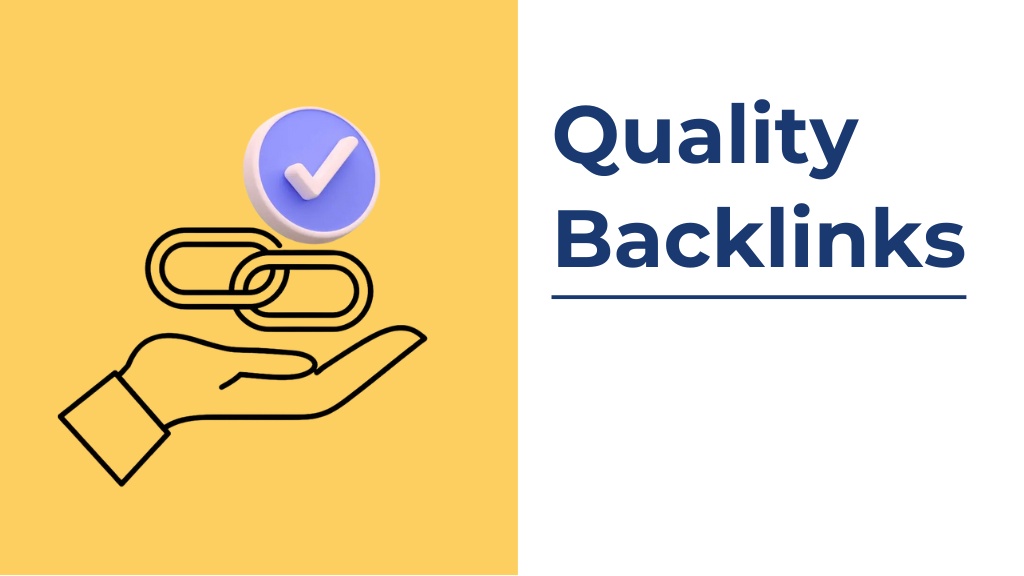
If you’re ready to start building backlinks, here are three quick strategies to help you gain authoritative backlinks for your site:
Focus On Creating High-Quality, Valuable Content
One of the most effective ways to earn backlinks is by consistently producing high-quality content that is informative, engaging, and valuable to your audience. Content that offers useful insights naturally attracts interest from other websites, and when they find it beneficial, they’ll link back to it on their own sites.
Creating well-researched articles, in-depth guides, or unique case studies not only draws traffic but also establishes your site as a reliable source of information-leading to more organic backlinks.
Identify And Fix Broken Links On Other Websites
Another smart backlink strategy is to search for broken links on authority sites within your industry. Broken links can harm a site’s SEO performance and user experience, but many site owners are unaware of them. You can reach out to these site owners, point out the broken link, and offer your own relevant content as a replacement.
This approach helps both parties: they fix their broken links, and you gain a valuable backlink to your site.
Leverage Guest Posting Opportunities
Another effective method to acquire backlinks is through guest posting. This approach involves creating blog posts or articles for another site in your industry. In exchange, you’re allowed to include a link back to your own site. Not only does this help in link building, but it also gives your brand exposure to a larger audience.
Make sure to guest post on high-quality sites that align with your industry to ensure the backlinks are relevant and beneficial to your SEO.
Utilize Link Building Tools
To enhance your backlink strategy, take advantage of link-building tools that can analyze your current backlink profile and your competitors’ as well. Tools like Ahrefs and SEMrush are excellent for identifying backlink opportunities, tracking your progress, and finding high-authority sites to target for links.
These tools offer insights into which links are helping or hurting your rankings and can give you an edge in developing an effective backlink strategy.
3 Effective Ways To Boost Your Authority With Backlinks
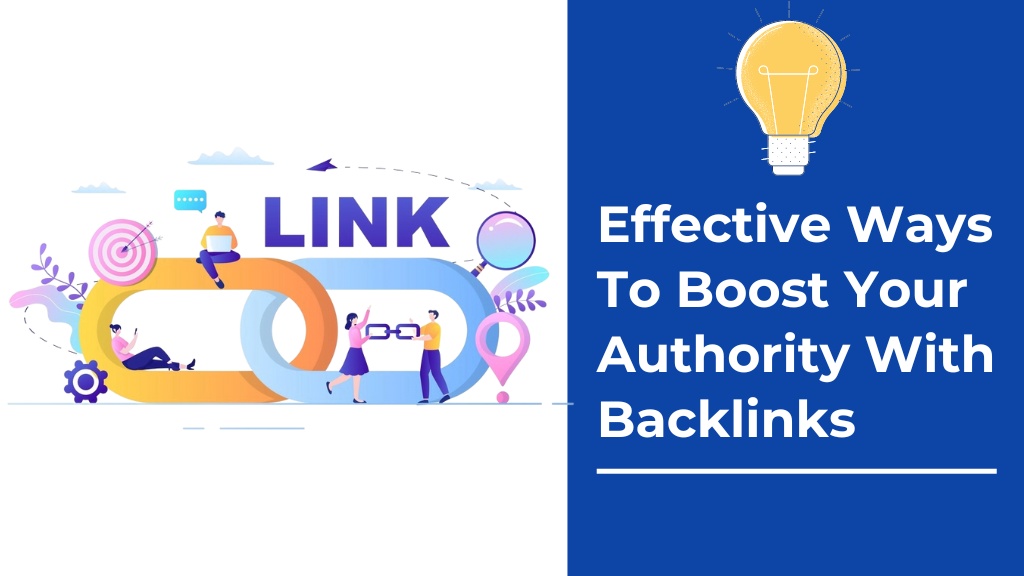
Quality Content Production
The foundation of any successful link-building strategy begins with producing valuable, informative content. If you want to earn backlinks from reputable sites-whether naturally or through outreach-you need to invest in long-form, high-quality articles that offer real value.
Which types of content work best for link building? Consider these formats:
- Research studies and reports
- In-depth how-to guides
- Statistical roundups and analysis
- Engaging infographics
- Niche-specific directories
While you can experiment with various content formats in your strategy, consistently incorporating these types will be crucial to improving your SEO performance and attracting backlinks.
Execute Targeted Cold Outreach
Getting your content noticed by the right people is essential for earning backlinks. Directly reaching out to authoritative websites through cold outreach can boost your site’s credibility and increase your chances of acquiring valuable backlinks.
Treat your outreach as you would any other cold email campaign: identify a list of prospects, and craft a compelling message to get their attention. Keep your emails concise, showcase the value of your content, and get creative with your approach to stand out in their inbox.
Personalization is key. Research the recipient’s website and recent posts, referencing specific articles or topics to build a connection. Tailor your email to their niche or website size, ensuring your message is relevant and the content you’re offering is a perfect fit for their audience.
For instance, a personalized email might include a playful touch like tweaking a familiar phrase to capture attention, such as “May the link guide you” instead of “May the light guide you.” Small, creative details like this can boost response rates and make your outreach stand out.
Regular Authority Checks
Don’t overlook the technical side of managing your backlinks. It’s easy to lose track of all the links pointing to your site, but not every backlink is beneficial. Monitoring your backlink profile is essential for maintaining authority and credibility.
While you can’t directly control the authority of websites linking to your content, you can use metrics like domain rating to assess the quality of those backlinks. Regularly checking these metrics will help you identify low-quality or spammy links that may harm your site’s reputation.
If you come across undesirable backlinks, you can use Google’s Disavow Tool to remove them. Simply upload a .txt file with the unwanted URLs to disavow them. To keep this process manageable, set up a routine for conducting backlink audits. Additionally, tools like Google Search Console can help you track incoming links and ensure your backlink profile stays healthy.
By consistently creating high-quality content, executing thoughtful outreach, and regularly monitoring your backlink profile, you’ll improve your website’s authority and boost your SEO performance.
9 Most Effective Types Of Backlinks For SEO Success
Backlinks come in many forms, each with varying levels of importance. Understanding the different types of backlinks can help you shape your link-building strategy to secure top-quality links that will boost your SEO performance. Below are the nine best types of backlinks to pursue.
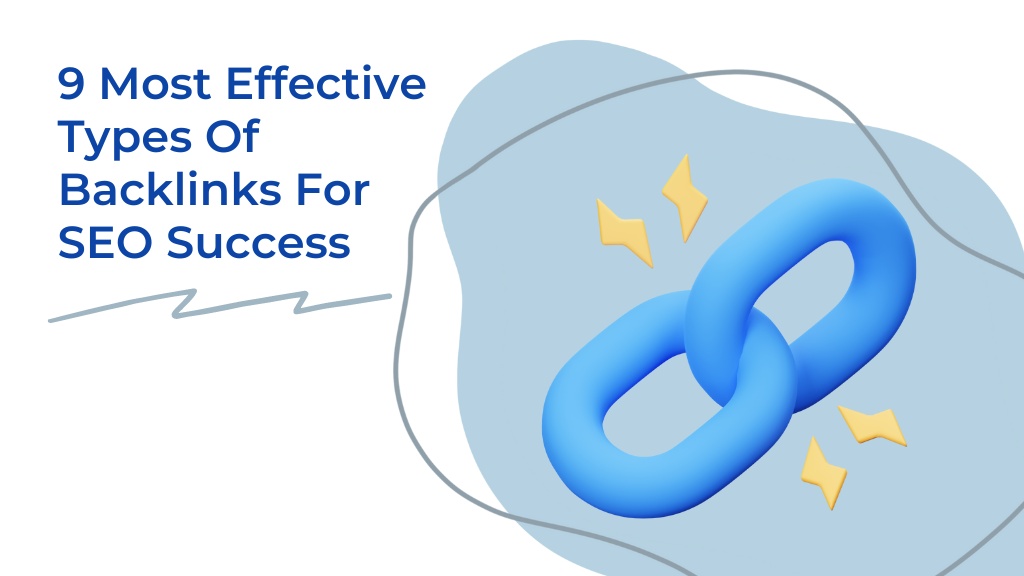
Editorial Backlinks
Editorial backlinks are some of the most valuable you can acquire. These are links embedded within high-quality, relevant content, such as articles or blogs, that mention your website as a source of information or quote your business representative. Editorial backlinks can also appear in link roundups on specific topics.
To earn editorial backlinks, focus on creating evergreen content that positions your brand as a thought leader. Shareable, captivating content-like infographics or well-researched articles-can attract attention organically. Use SEO tools to discover trending keywords and topics that competitors are ranking for but you haven’t covered yet.
Backlinks From Guest Blogging
Contributing guest posts to reputable websites often allows you to include a backlink to your site. Guest blogging is a cornerstone of many SEO strategies because it not only builds backlinks but also increases your visibility and authority. Always prioritize high-quality, niche-relevant websites when pursuing guest blogging opportunities to ensure the links provide maximum SEO benefit.
Backlinks In Business Profiles
When creating business profiles on platforms like social networks, business directories, review sites, or industry-specific listings, you’re often given the opportunity to link to your website. Search engines recognize these listings as indicators of a site’s legitimacy and longevity, which can positively impact your SEO.
Backlinks From Webinars
Webinars and their recordings are a rich source of backlink opportunities. When you host webinars that provide valuable information, other websites might link to the webinar page or mention your company when discussing the topic. To gain these backlinks, promote your webinars just like you would a blog post or guest article, and make them a resource worth linking to.
Free-Tool Backlinks
Offering a useful tool for free can attract both attention and backlinks that have a lasting impact on your SEO. This could be anything from a simple cost calculator relevant to your industry to a free version of a paid app. Promote your free tool through websites that share a similar target audience, and leverage SEO tools to find the best platforms to reach out to.
Acknowledgment Backlinks
When your company sponsors an event, makes a donation, or sends a representative to speak at a conference, you often receive an acknowledgment on the event’s website, complete with a backlink. You can analyze your competitors’ backlinks to identify opportunities for earning similar acknowledgments for your own site.
Guest Post Bio Links
If a website doesn’t allow backlinks within the main content of your guest post, they will usually permit links in the author bio section. While these backlinks aren’t placed within editorial content, they still contribute to your SEO efforts, particularly if the site has a large, engaged audience. This makes guest post bio backlinks a valuable addition to your strategy.
Badge Backlinks
Creating a badge that recognizes other websites or companies for their achievements or performance is a clever way to build backlinks. When these companies proudly display your badge on their sites, it typically includes a backlink to your website. Use SEO tools to identify suitable targets for your badge program by focusing on websites with a similar audience to yours.
Comment Backlinks
Commenting on blogs is another way to gain backlinks, though this tactic requires caution. While spammers often misuse comment sections to generate low-quality backlinks, leaving thoughtful, genuine comments on high-quality blog posts can provide a small boost to your traffic and brand visibility. Just ensure that the comments are relevant and add value to the discussion.
These nine types of backlinks provide different advantages, but all can play a crucial role in boosting your site’s SEO.
How To Effectively Analyze Backlinks
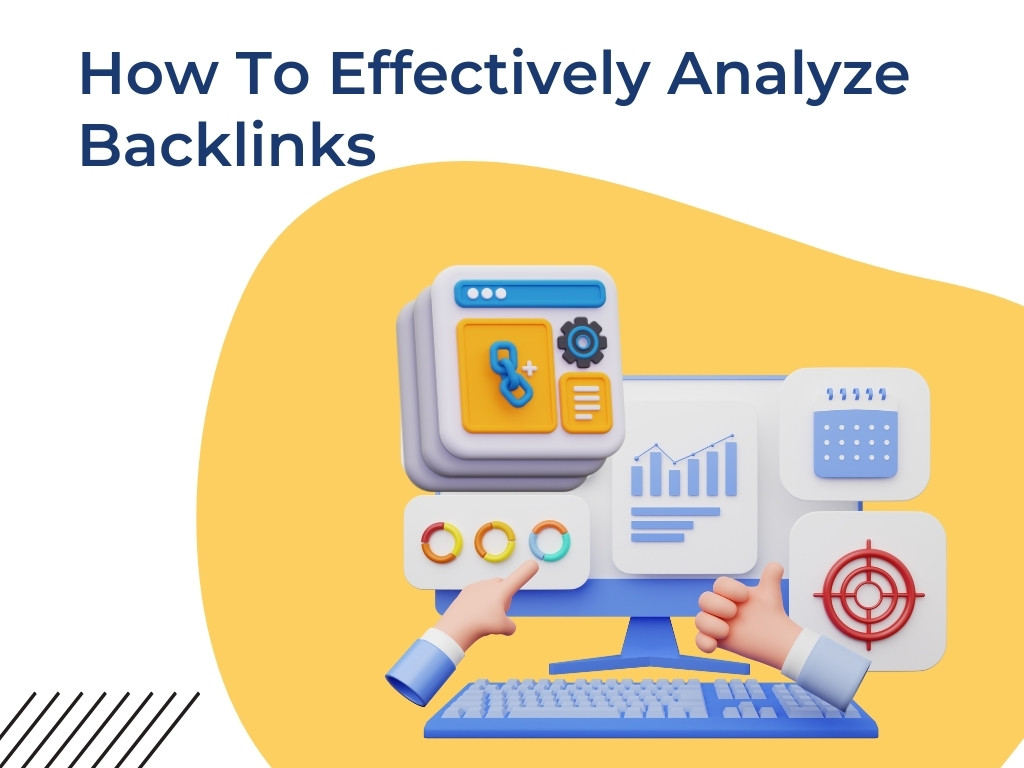
Regularly analyzing your backlinks is crucial for any SEO campaign. By assessing both the quality and quantity of links pointing to your website, you can gain valuable insights. Tools like Ahrefs, Moz, and SEMrush are excellent resources for performing in-depth backlink analysis. These platforms offer detailed insights into the number of backlinks, the domain authority of the linking sites, and the anchor text used in those links. Regular analysis ensures that your link profile stays healthy and continues to benefit your SEO efforts.
Backlinks You Should Avoid At All Costs
Not all backlinks are created equal-some can harm your SEO rather than help it. It’s crucial to identify and avoid bad backlinks that could damage your site’s rankings
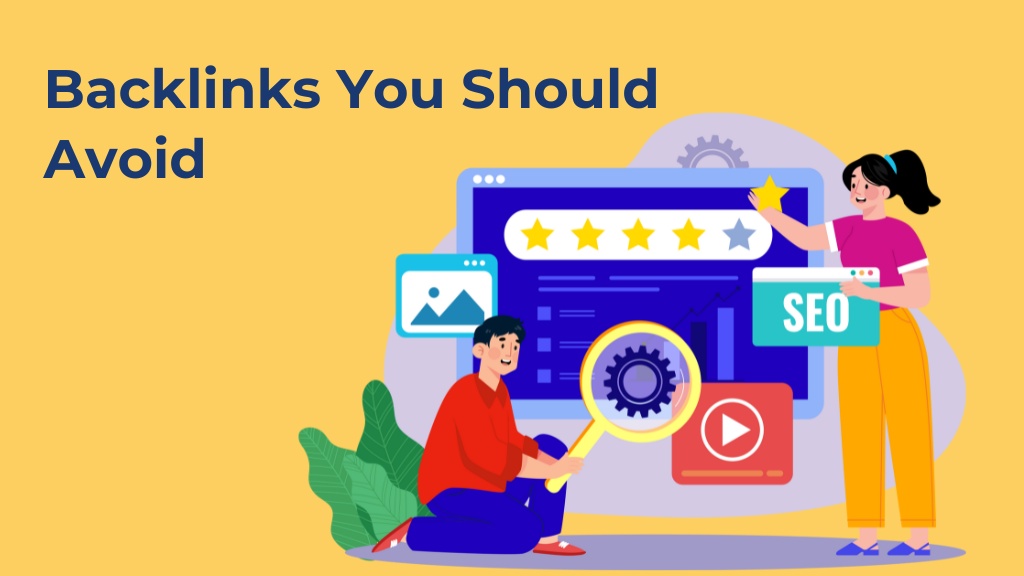
Paid Links
Search engines prioritize organic backlinks from reputable sites. Google explicitly warns against buying or selling links, as it can negatively impact your search rankings. In the end, purchasing links won’t deliver the SEO benefits you’re seeking and could lead to penalties instead.
Unworthy Press Release Backlinks
Publishing press releases solely to obtain backlinks can do more harm than good. If your press release isn’t newsworthy, it may be seen as spam by both visitors and search engines, which can damage your SEO standing.
Low-Quality Or Irrelevant Directory Links
Submitting your site to directories that are either irrelevant or untrustworthy can hurt your SEO performance. These types of directory links are often flagged as spam and may frustrate visitors who encounter them.
Spammy Forum Backlinks
Backlinks in forum posts should be earned in high-quality discussions. Posting spammy links in forums is not a sustainable link-building strategy and often leads to low engagement or penalties from search engines.
Domains With High Spam Score
Domains with high spam scores are flagged by search engines as being low-quality or manipulative. Receiving backlinks from these sites can negatively affect your rankings. To avoid this, use tools like Ahrefs or Moz to assess a website’s spam score before pursuing a backlink.
What Types Of Backlinks Are Valuable?
When building backlinks, quality takes precedence over the number of links. Below are some types of backlinks that can have the most profound effect on your SEO efforts.
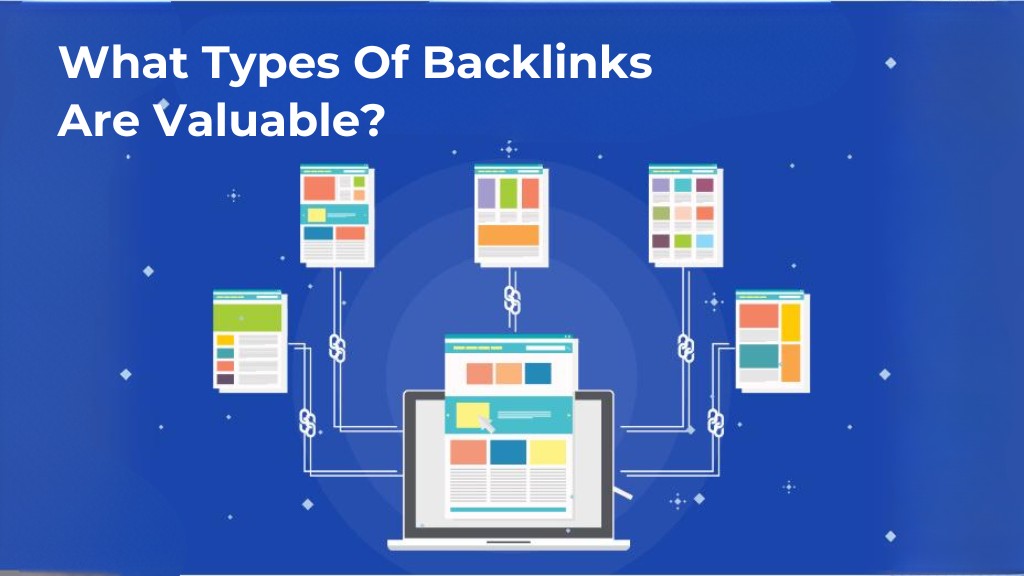
Backlinks From Trusted, High-Authority Websites
The most valuable backlinks come from reputable, high-authority websites. These sites pass on authority and trustworthiness to your site through the backlink, resulting in a noticeable boost in your organic search traffic. While difficult to obtain, backlinks from authoritative domains are worth the effort.
Anchor Text That Includes Target Keywords
Anchor text is the clickable text in a hyperlink, and when it includes your target keywords, it can boost your SEO performance. Ahrefs research shows a correlation between keyword-rich anchor text and higher search rankings for those keywords. However, avoid over-optimizing your anchor text, as it could trigger penalties from Google’s Penguin update, which targets manipulative linking practices.
Relevant Site Links
Search engines prefer backlinks that are relevant to your site’s content. For example, if you publish an article about universities, backlinks from education-related websites will carry more weight than links from unrelated topics like fitness or fishing. Ensuring relevancy between the linking and receiving sites improves the value of the backlink.
Dofollow Links
Search engines ignore links tagged with “nofollow.” To enhance your SEO, focus on securing dofollow links, which pass on link equity. While most links are dofollow by default, some sources-like blog comments, paid ads, and press releases-often contain nofollow tags, so be mindful of the types of links you pursue.
Links From Unique Domains
Backlinks from different domains carry more weight than multiple links from the same site. If you’ve already secured a backlink from Website X, future links from that same domain will have diminishing returns. Prioritize earning backlinks from new domains to maximize their impact on your SEO.
5 Strategies For Earning Backlinks In SEO
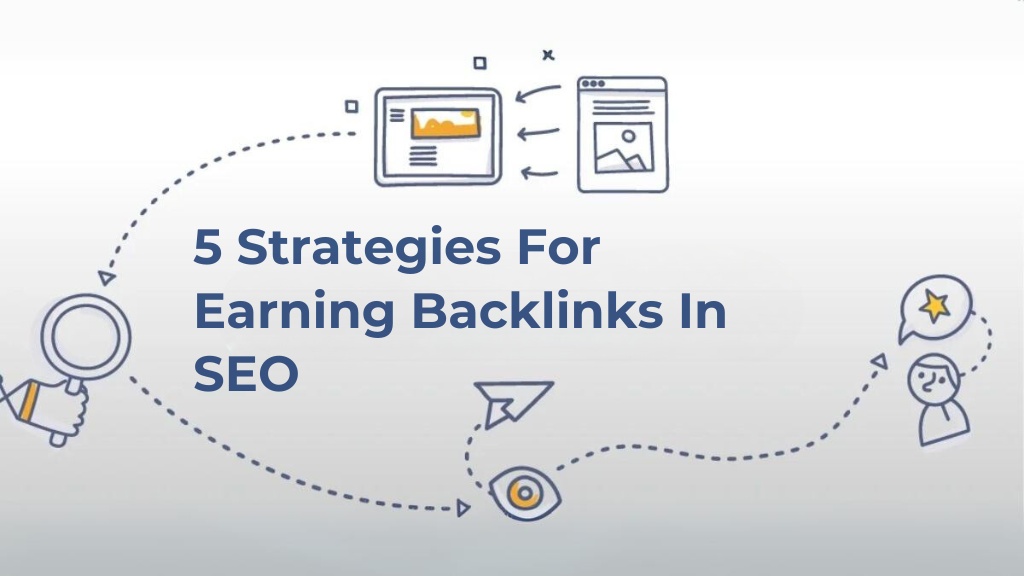
Link Outreach
One of the most straightforward strategies is traditional cold outreach. This involves contacting website owners or managers directly and asking them to link to your content. While it may take time and persistence, a well-crafted pitch highlighting the value of your content can lead to quality backlinks.
Manual Linking
If you manage multiple websites or have access to the backend of several sites, you can create backlinks manually. However, be cautious-this method should be used sparingly. Overuse, especially when linking several of your own sites together, can trigger penalties from Google, particularly in light of updates like the 2022 link spam update.
Link Swaps
A common practice in the SEO world is link swapping, where you trade a backlink for a backlink. This mutual exchange can be an effective way to build links, as many webmasters are more inclined to participate if there’s something in it for them. However, ensure the links are relevant and beneficial for both parties to avoid any potential SEO pitfalls.
Paid Backlinks
Paid backlinks come in two main forms. Some website owners charge a fee in exchange for a backlink, knowing their site holds significant value. Alternatively, link-building services can be hired to purchase and secure backlinks for you-typically using a range of outreach strategies similar to the ones listed here. While effective, purchasing backlinks should be done carefully to avoid violating search engine guidelines.
Guest Posting And Blogging
Guest blogging remains one of the most powerful ways to earn backlinks. In this scenario, you create a high-quality article for another website in exchange for including a backlink to your own site. This win-win strategy not only helps you build backlinks but also expands your audience and boosts your online authority.
Broken Link Building
Broken link building is a highly effective technique where you find broken links on industry-related websites and offer your own content as a replacement. The process involves identifying websites with broken links, determining the original content that was linked to, and then creating similar or updated content on your own site. You can then reach out to the website owner and suggest they replace the broken link with one that points to your content.
This method not only helps you secure backlinks but also provides value to the website owner by fixing broken links on their site.
5 Tips For Backlink SEO
Wondering how to effectively acquire backlinks? Here are five expert-backed tips to guide your link-building efforts.
Tip 1: Focus On Quality Over Quantity.
Chasing the “perfect” backlink can be elusive, but you don’t need perfection to stay competitive. Instead, focus on quality over sheer volume. SEO expert Mamajanyan advises setting a standard for what metrics define a good backlink for your strategy. Once you identify your baseline, you can focus on securing backlinks that align with those metrics.
“While domain authority (DA) and domain rating (DR) matter, the most crucial factor is whether the website represents a legitimate business, such as a SaaS company or agency” says Mamajanyan. Avoid sites created solely for selling backlinks, and prioritize links from genuine, authoritative sources.
Tip 2: Prioritize Low-hanging Fruits For Quick Wins
Unlinked brand mentions present an easy opportunity, especially for startups gaining traction or established businesses with ongoing media coverage. Monitor the web for mentions of your brand, and reach out to the site owners who haven’t linked back to your website. Checking for unlinked mentions once a month ensures you don’t miss easy backlink opportunities. Since these sites already recognize your brand, converting mentions into backlinks often requires minimal effort.
Tip 3: Leverage Relationships, Not Links
The future of link-building lies in cultivating meaningful relationships rather than simply trading links. For example, you can engage with industry experts, ask them to share their insights on topics relevant to your content, and involve them in webinars or podcasts. When these relationships develop, backlinks naturally follow.
As link-building expert Tachalova puts it, “Links are recommendations that are earned through authentic connections.” She advises running co-marketing campaigns with companies in your niche, offering value beyond the backlink itself. Building relationships with industry professionals not only helps you gain valuable links but also boosts your brand’s visibility across wider audiences.
Tip 4: Widen Your Prospecting To Indirectly Related Verticals
Sometimes, the best backlinks come from outside your immediate industry. For example, if you run a vegan skincare shop, you may first think to target skincare or vegan-focused blogs. However, you can also reach out to platforms with a broader but related focus, like environmental or sustainability blogs.
Consider writing articles or op-eds that link your business to wider social or environmental causes. By connecting your cruelty-free, eco-friendly products to global initiatives, you can attract backlinks from platforms outside your usual scope-thus expanding your link profile.
Tip 5: Monitor And Disavow Low-quality Links
Don’t underestimate the power of social proof when it comes to earning backlinks. When you build a solid reputation and have customer testimonials, case studies, or media coverage, you make it easier for other sites to reference your content and link back to you. Showcase your business success stories and collaborate with influencers or thought leaders to enhance your authority in your niche.
Frequently Asked Questions

What Is A Backlink?
A backlink is essentially a hyperlink from one website to another. If another site links to yours, that’s a backlink for you. Similarly, when you link to another site, you are giving them a backlink.
Can Buying Backlinks Help Improve My Website’s Search Engine Ranking?
No, purchasing backlinks will not improve your search engine rankings. Paid backlinks must be tagged as “sponsored,” signaling to search engines to disregard them. If a site uses paid links without properly tagging them, it risks penalties from search engines, which can hurt its overall rankings.
What Is The Most Effective Type Of Backlink?
The most valuable type of backlink is a do-follow link. Do-follow backlinks pass SEO value (often referred to as “link juice”) from the linking site to the linked site, which can help boost the latter’s search engine ranking.
How Can I Tell If A Backlink Is High Quality Or Low Quality?
To assess the quality of a backlink, first, determine its type: nofollow or spammy links are considered low-quality because they don’t pass ranking benefits. Next, examine the backlink profile of the linking site by checking its domain rating (DR) using tools like Ahrefs. Higher domain ratings typically indicate higher-quality backlinks.
How Many Backlinks Per Month Are Good For SEO?
In general, acquiring backlinks from websites with a domain authority score between 60 and 100 is considered excellent, while a score between 40 and 50 is acceptable. Below 40 is typically seen as suboptimal. Focus on earning backlinks from credible, relevant websites within your niche, as these will be trusted by search engines and contribute positively to your SEO.
Can You Rank Without Backlinks?
While it’s possible to rank for low-competition keywords without backlinks, having high-quality links can greatly enhance your rankings. This is especially true in competitive markets, where strong backlinks can help secure and maintain a top position.
Conclusion
Backlinks are a vital part of Backlink SEO, serving as votes of confidence from other websites that signal your content’s value to search engines. Different types of backlinks, such as do-follow, no-follow, editorial, and guest post links, all contribute to varying degrees to your SEO strategy.
Prioritizing high-quality backlinks from authoritative and relevant sources can greatly improve your website’s visibility, organic traffic, and overall search rankings. In the competitive landscape of SEO, effective Backlink SEO strategies are essential to driving long-term success.

